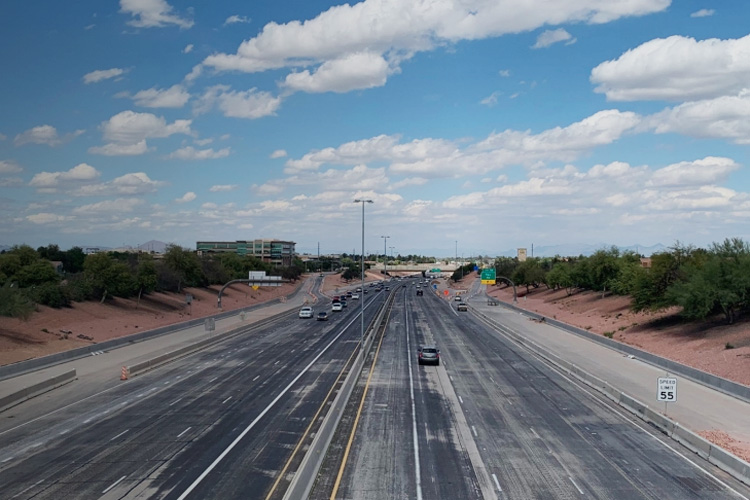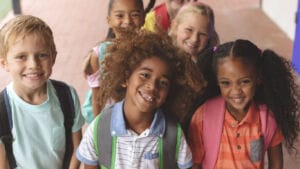There has been a significant drop in automobile use both across Arizona and throughout the country in the wake of the COVID-19 outbreak.
According to Ram Pendyala, director of the School of Sustainable Engineering and the Built Environment at Arizona State University, Phoenix traffic may have reduced by 30% or more since schools closed and businesses encouraged workers to stay home to help control the spread of the virus.
“Many people are working remotely as part of social distancing measures to combat COVID-19,” Pendyala said. “And that mandated isolation certainly has an impact on human activity. From a transportation perspective, it means reduced traffic and energy consumption, cleaner air and less wear and tear on our roads — all good things for sustainability.
“But the lack of traffic is not really a good thing. Traffic is a sign of economic and social vitality. Mobility is a sign that people are interacting with each other, businesses are thriving and society is functioning. It’s only the adverse effects of traffic that we don’t want.”
Forecasting travel demand to better manage traffic, promote sustainable transportation and support infrastructure planning is a focus of Pendyala’s work as a professor of civil, environmental and sustainable engineering in the Ira A. Fulton Schools of Engineering at ASU.
His research into human preferences and behaviors related to transportation offers insights on the impact of social distancing during the COVID-19 outbreak in America.
“For example, this experience could prompt us to think differently about the nature of work in the future,” Pendyala said. “On the one hand, we all enjoy the first weeks of telecommuting. But then workers begin to feel isolated and employers start getting concerned about productivity. We might see some increase in people working remotely on a permanent basis, but likely for only a part of each week, as opposed to the full-time telecommuting we see now.”
Pendyala also points out that public transportation ridership has dropped by as much as 60% during recent weeks. Though transport agencies like Valley Metro have instituted more stringent disinfection protocols, public fear is widespread and difficult to overcome.
Even alternatives to public transportation from ride-sharing services to micro-mobility are suffering, as people grapple with uncertainty about how the new coronavirus is transmitted.
“Do you want to get into the Uber or Lyft vehicle that has served other passengers? Are you going to use the scooter that so many other people have handled? Are you carrying disinfectant wipes with you everywhere you go?” Pendyala said. “These are questions that we’re asking now.”
Pendyala explains that the impact of COVID-19 may alter logistics services too, as people begin to have more goods delivered to them rather than driving to a local retailer where they would jostle with crowds.
“But those packages are handled by many sets of human hands. Are we going to see more robotic handling of our packages?” he said. “All of these issues are part of the discussion.”
Pendyala notes that these initial weeks of disruption can have a significant impact on how we plan to spend our time.
“But much depends on the duration of this state of affairs,” he said. “If virus-driven restrictions are lifted in a month or so, you will see people rebound to their previous habits rather quickly. They’ll return to the office and go shopping for that furniture they delayed buying. At the same time, we could see a sudden surge in leisure travel. There could be so much pent-up demand that people will rush out to ball games or take that trip to Disneyland.”
By contrast, Pendyala said that if efforts to control the virus limit our lives for a longer period, such as a year or more, the changes to our routines may become more lasting.
“For example, the closure of restaurants, movie theaters and similar establishments has many of us rethinking recreational experience,” he explains. “So, people may look to enjoy more time in the great outdoors, both now and in the longer term.”
Though even if more of us begin to embrace activities like hiking and camping, the way we travel to our favorite coasts, mountains and national parks could change in the wake of the current crisis.
“Airlines have been decimated by COVID-19,” Pendyala said. “People are concerned about sharing tight spaces with others, and that mindset may persist for a while. Consequently, air travel could take quite some time to recover. Alternatively, cars give us a sense of control over our surroundings. So, we could see a real increase in driving for medium-distance and even long-distance travel.”
In the end, Pendyala believes that we are not likely to see enormous, lasting effects on daily life.
“As the world recovers from the virus, we’ll all go back to spending a third of our lives earning a livelihood. The kids will be back in school and we’ll want to connect with friends and family just as we always did,” he said. “The return of these rhythms of life means that any permanent changes from the virus will likely be rather modest.”




